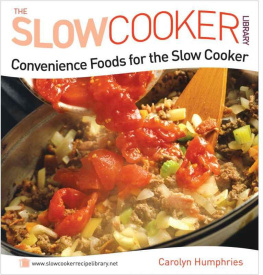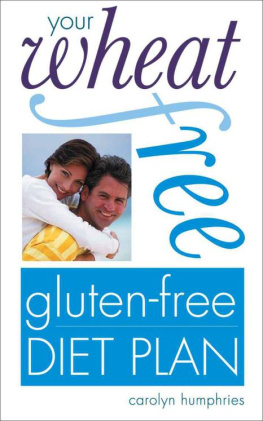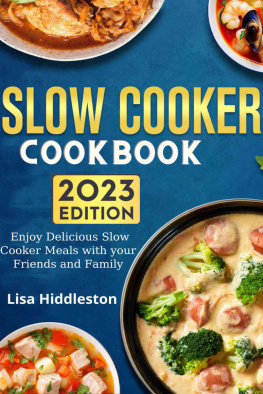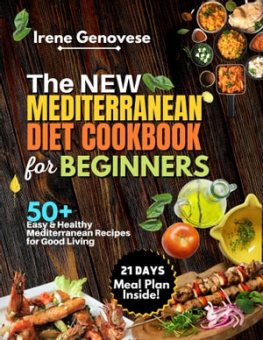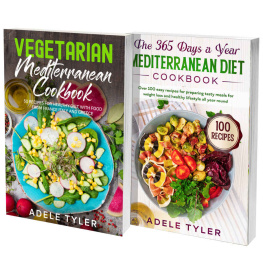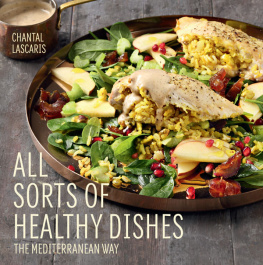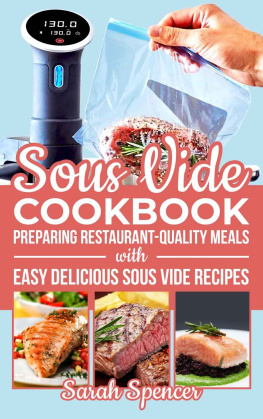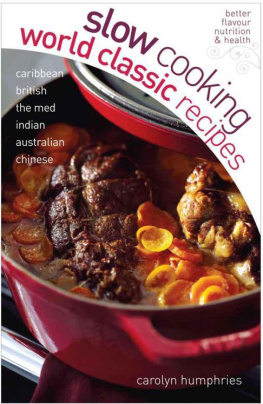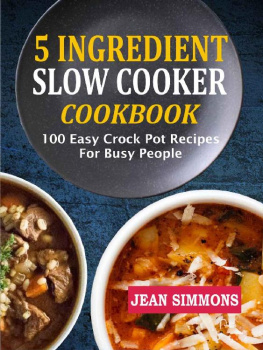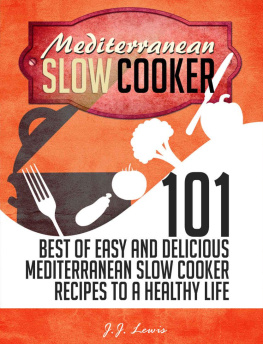
Table of Contents
Introduction
Mediterranean food is, arguably, among the most well known and popular in the world. The glorious fruits, such as citrus, peaches, nectarines, melons, tomatoes, figs and olives; the stunningly colourful vegetables, such as aubergines (eggplants), artichokes, (bell) peppers, courgettes (zucchini), garlic and onions; the fragrant herbs and spices; the rustic dried beans, breads, cured meats and sausages; the magnificent seafood; the abundant array of cheeses from cows, sheep, goats and buffalo; and, of course, the fabulous wines to wash it all down with.
Whether you are cooking hearty dishes like my version of bollito - an Italian peasant speciality of a selection of meats and vegetables gently braised for hours until meltingly tender - or more elegant fare such as the classic coq au vin - chicken cooked in white burgundy with button (pearl) onions and mushrooms - you will find your slow cooker invaluable for making great Mediterranean food.
But dont think you can cook only soups and stews! You can create wonderful pts and fish, vegetable, pasta and rice dishes as well as a range of undeniably exquisite desserts. This book is packed with modern Mediterranean food at its best, from all the countries that border the ocean - France, Italy, Spain, Portugal, Morocco, Turkey and Greece - and all the recipes can be made in a simple, leisurely way in your slow cooker.
Using Your Slow Cooker
- Stand the electric base on a level, heat-resistant surface. Do not use on the floor.
- Do not preheat your pot unless your manufacturer's instructions tell you to.
- Put the ingredients in the ceramic crock pot, then put the pot in the base.
- Add boiling liquid.
- Cover with the lid and select the cooking temperature (High, Medium or Low).
- Cook for the recommended time, checking after the shorter time if a range is given. This will usually be sufficient for most cookers but the food won't spoil if it is cooked for the extra time.
- Taste, stir and re-season, if necessary.
- Switch off the cooker and remove the crock pot using oven gloves.
Cooking Tips for Using the Slow Cooker
- Any of your usual soup, stew or casserole recipes can be cooked in your slow cooker but liquid doesn't evaporate as much as it does when cooking conventionally, so cut down the liquid content by 30-50 per cent (not quite so important for soups) or increase the flour or cornflour (cornstarch) thickener by one-third. You can always add a little extra liquid at the end of cooking, if necessary.
- Should there be too much liquid at the end of cooking, strain it into a saucepan and boil rapidly for several minutes until reduced to the quantity you require, or thicken it with a little flour or cornflour blended with a little water.
- If wanting a brown finish to meat or poultry, fry it quickly in a frying pan before adding to the crock pot.
- For many dishes, it is best to quickly fry onions before adding them - the flavour is completely different from slow-cooking them from raw.
- Make sure all frozen foods are thawed before use.
- Cut root vegetables into small, even-sized pieces and put them towards the bottom of the pot as they will take longer than meat or other vegetables to cook.
- Do not cook too large a joint or bird in the crock pot. It should fit in the pot with at least a 2.5 cm/1 in headspace. If unsure, cut the joint or bird in half before cooking (it will then cook quicker, as when cooking conventionally).
- Most foods can be slow-cooked but pasta (unless pre-cooked) and seafood should be added for the last hour, and cream at the end of cooking. All the recipes in this book tell you how and when to do this.
- Dried beans must be boiled rapidly in a saucepan of water for at least 10 minutes before adding them to your crock pot. This is necessary to destroy toxins.
- If preparing food the night before you wish to start cooking, store the ingredients in the fridge overnight. Put them in the crock pot in the morning and cover with boiling liquid or sauce before cooking.
- Do not open the lid unnecessarily during cooking as heat will be lost. If you remove it to add extra ingredients or to stir more than once or twice, you may need to add on an extra 10 minutes at the end (but in most cases there is sufficient cooking time built in to allow for this).
- When cooking soups, make sure there is a 5 cm/2 in headspace in the pot to allow for bubbling during cooking.
- When food is cooked, the cooker can be switched off and left for up to 30 minutes. The food will stay piping hot. If you need to leave food keeping hot for longer, switch to Low.
- If you are unsure if a joint of meat or a bird is cooked through, check by inserting a meat thermometer at the end of cooking.
- Most foods can be cooked on High or Low (or Medium or Auto-cook if you have them). Fish, rice and egg-based dishes, however, must be cooked on Low.
- If you are planning on being out all day, opt for cooking on Low, then there is little or no chance of the meal spoiling even if you are late (particularly if you don't have a programmable slow cooker).
- You can use the crock pot to keep hot drinks such as mulled wine warm, or for hot dips or fondues. Keep the pot on the Low setting.
- Use a crock pot suitable for the quantity of food you want to cook. It should be at least a third to half full for best results, though for foods like ribs or chicken wings a single layer in a large pot is fine. Don't use a small pot and pack it tightly to the top or the heat won't be able to penetrate the food - just as when cooking conventionally. But, conversely, don't have too little either. For instance, one chop in the pot will overcook unless the pot is at least filled up to a third with liquid. So, if cooking for one, you may need to double the amount of liquid to be on the safe side.
Looking After Your Slow Cooker
- Do not put the crock pot or the lid in the oven, freezer or microwave, or on the hob, or under the grill (broiler).
- Do not plunge the hot pot into cold water after cooking or it may crack.
- Do not leave the whole pot soaking in water as the base is unglazed and porous so will absorb the water. You may, however, leave water in the pot to soak it before washing.
- Do not preheat the cooker before adding the ingredients (unless your manufacturer's instructions tell you to).
- Do not use the slow cooker to reheat food.
- Do not leave uncooked food in the slow cooker when it is not switched on (so never put it in there overnight ready to switch on in the morning. Store the ingredients in the fridge).
- Do not use abrasive cleaners on the crock pot - but it will be dishwasher safe.
- Do not immerse the electric base in water; simply unplug it and wipe it clean with a damp cloth.
Cooking Times
Some crock pots now have three cooking settings but others have only two. I have used only High or Low as they will be relevant to all. I have given times on Low for most recipes so you can leave them cooking all day while you are out at work or play. However, you can use Medium (if you have it) or High for any of them except desserts and egg, fish and rice dishes, which must be cooked on Low, or pasta, which must be cooked on High, for best results.
Some cookers also have Auto-cook. Follow your manufacturer's guidelines to use it. I recommend you use Low if you are going to be out all day.
Next page
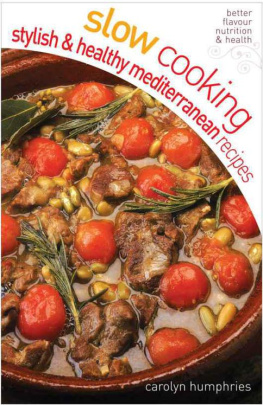
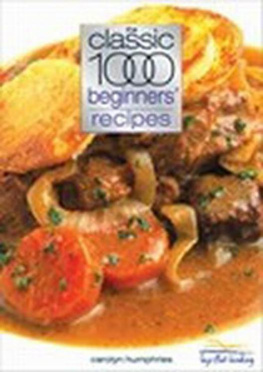
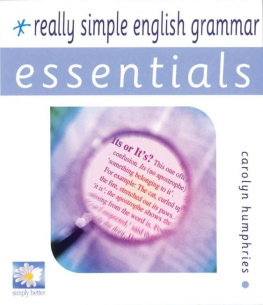
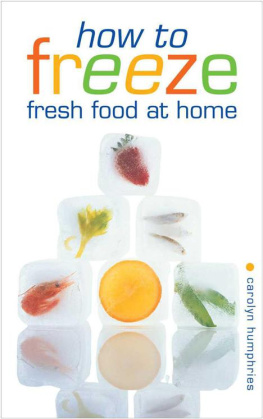
![Humphries - The low carb long term lifestyle : [with a twist of Mediterranean to add zest to your eating]](/uploads/posts/book/104760/thumbs/humphries-the-low-carb-long-term-lifestyle.jpg)
